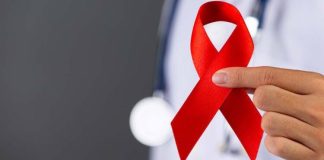Global rating agency, Fitch Ratings, has affirmed Nigeria’s Long-Term Foreign-Currency Issuer Default Rating (IDR) at ‘B+’ with a Negative Outlook.
A statement issued by the firm last week explained that Nigeria’s ratings were supported by its large and diversified economy, significant oil reserves, its net external creditor position, low external debt service ratio and large domestic debt market.
According to Fitch, these were balanced against relatively low per capita GDP, an exceptionally narrow fiscal revenue base and a weak business environment.
It added that the Negative Outlook reflects the downside risks from rising government indebtedness, and the possibility of a reversal of recent improvements in foreign currency (FX) liquidity and a faltering of the still fragile economic recovery.
Fitch forecasts growth of 1.5% in 2017 and 2.6% in 2018, following Nigeria’s first contraction in 25 years in 2016. GDP growth continued to contract in 1Q17, but by less than in the previous four quarters.
The recovery will be driven mainly by increased FX availability to the non-oil economy and fiscal stimulus, as higher oil revenue and various funding initiatives have raised the government’s ability to execute on capital spending plans.
However, the FX market remains far from fully transparent, domestic liquidity has also become a constraint, and the growth forecast is subject to downside risks. Inflation remains high at 16.1% in July 2017, but Fitch projects it to decline to 11% in 2019.
Crude oil production rose to 1.8 million barrels per day (mbpd) in July 2017, from 1.5 mbpd in December 2016; the increase was driven by the lifting of force majeure at the Forcados export terminal and the completion of maintenance at both Forcados and the Bonga oil field.
Fitch has revised down its expectation of full-year average production to 1.8 mbpd, which is about equal to 2016 production.
Separately, Fitch notes that the imposition of an OPEC quota may cap Nigeria’s crude production at 1.8mbpd, which could limit the oil sector’s upside potential. However, as it excludes condensate production, the quota should not affect Nigeria’s near-term production potential.
In April 2017, the Central Bank of Nigeria (CBN) introduced the Investors & Exporters (I&E) currency window and gradually introduced further measures to improve the liquidity of this instrument.
It also intervenes actively to support the currency while keeping domestic liquidity conditions tight.
In addition, higher oil prices and increased portfolio and FDI inflows have enabled the CBN to increase its provision of FX liquidity to the market. As a result, the parallel exchange rate began to converge towards the I&E rate, currently at around NGN360 per USD, and foreign currency liquidity shortages eased.
Most activity now occurs on the I&E window, and Fitch believes that the I&E rate should now be considered the relevant exchange rate.
Fitch forecasts the general government fiscal deficit to rise slightly to 4.5% of GDP in 2017 from 4.4% in 2016. Tax revenue in the first five months of 2017 underperformed budget expectations, as in 2015-16. The current Medium Term Expenditure Framework envisages a combined NGN3.5 trillion of capital expenditures in 2017 and 2018.
In 2016, with a budget year that ran to May 2017 the government executed approximately N1.2 trillion of the N1.6 trillion forecast in the 2016 budget. Improved financing will see a stronger execution of capital expenditure plans in 2017 and subsequent years. As oil production rises and the overall economy recovers, Fitch expects that higher revenues will drive a narrowing of the general government deficit to 3.4% in 2018.
Nigeria’s general government debt stock is low at 17% of GDP at end-2016, well below the ‘B’ median of 56% of GDP, and Fitch expects only a moderate increase to 20% of GDP at end-2017.
However, low revenues present a risk to public debt sustainability. General government debt to revenue, at 297% at end-2016, is already above the ‘B’ category median of 227% and Fitch forecasts it to increase to 325% in 2017. The ratio is even higher at the federal government level.
Nigeria’s current account surplus is expected to widen slightly to 1.0% of GDP in 2017, from 0.7% in 2016.
Fitch says it expects exports to increase by about 30% in 2017 and an additional 10% in 2018, as oil production and prices increase.
However, imports, which fell by over 30% in 2016, will also rise as dollar availability increases and the non-oil economy recovers.
The international reserves position has increased to USD30.8 billion as of end-July 2017 and it will be bolstered by expected external financing flows. Part of the reserves may be encumbered in forward contracts.
The economic contraction in 2016 and tight FX and naira liquidity weakened asset quality in the Nigerian banking sector. Non-performing loans rose to 12.8% at end-2016, up from 5.3% at end-2015. Rising impairment charges from bad loans have in turn led to capital adequacy ratios falling to 14.8% in 2016, from 16.1% at end-2015. The new FX window has aided FX liquidity for banks in 2017, but credit to the private sector (adjusted for FX valuation effects) is declining.
Nigeria’s ratings are constrained by weak governance indicators, as measured by the World Bank, as well as low human development and business environment indicators and per capita income.













